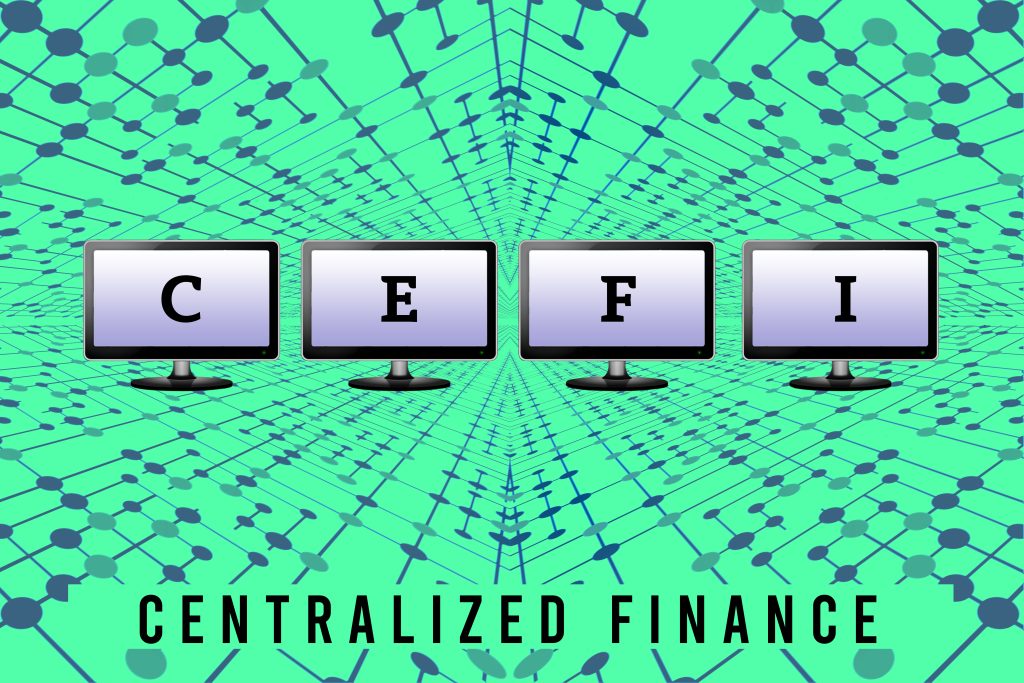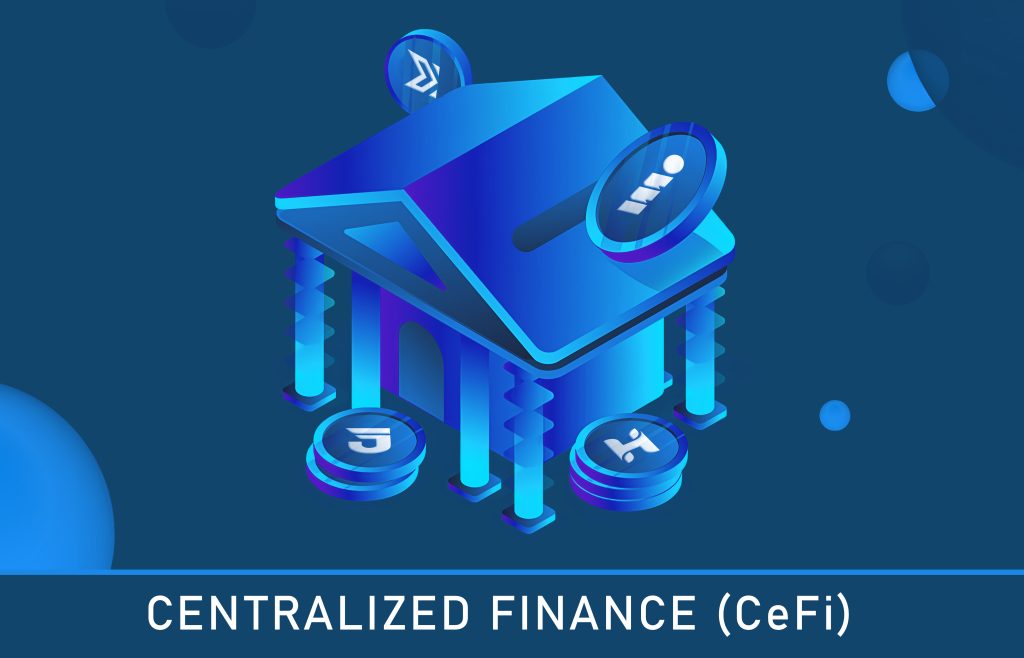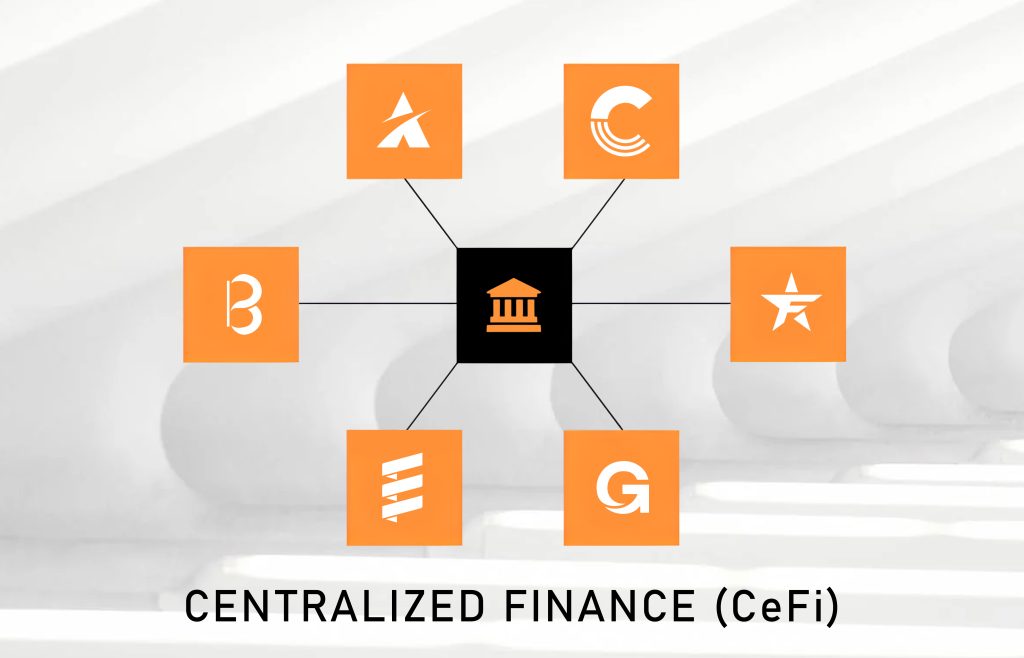Exploring Centralized Finance (CeFi) in the Modern World
Imagine a financial world without the stability and structure provided by central authorities like banks and financial institutions. It is a scenario that is hard to envision because Centralized Finance (CeFi) has long been the bedrock of our global economy. Despite the emergence of new financial technologies and paradigms, this system continues to play a pivotal role in global economies. But what is Centralized Finance, and how is it used? That is exactly what we are discussing today, so keep reading to learn what you need to know about CeFi.

Understanding Centralized Finance
Centralized Finance is built on the foundation of centralized institutions such as banks, credit unions, and other financial entities that operate as intermediaries in financial transactions. These institutions are responsible for overseeing, validating, and facilitating financial operations, from everyday banking transactions to complex financial services like loans, asset management, and investment services. The CeFi system is characterized by its structured regulatory environment, designed to ensure transparency, security, and consumer protection in financial dealings.
One of the main strengths of CeFi is its well-established framework, which has been developed and refined over centuries. This system offers reliability and a sense of security to its users, backed by regulatory bodies and government assurances like FDIC insurance in the United States. Moreover, centralized financial institutions provide a range of services and products tailored to meet diverse consumer needs, making financial services accessible to a broad spectrum of the population.
What are the Key Features of CeFi?
Centralized Finance is distinguished by several key features that define its operations and services:
- Regulatory Oversight: CeFi operates under strict regulatory frameworks set by financial authorities and governments. These regulations are designed to maintain the stability of the financial system, protect consumer interests, and prevent fraud and financial crimes.
- Intermediaries: At the heart of CeFi are the intermediaries – banks and financial institutions – that facilitate financial transactions. They act as the trusted third parties for a range of services, including deposits, loans, and investments.
- Accessibility and Familiarity: CeFi provides widespread accessibility to financial services, benefiting from an established network of physical branches and ATMs. Additionally, the familiarity of these systems garners consumer trust and confidence.
- Consumer Protection: Centralized financial systems are often backed by government insurance programs and have well-established protocols for consumer protection and dispute resolution.
- Professional Financial Management: CeFi institutions offer professional financial advice and management services, catering to both individual and institutional clients.
However, while CeFi has its advantages, it is important to acknowledge the challenges it faces, such as the potential for centralized control and manipulation, slower transaction processes compared to newer financial technologies, and vulnerability to systemic risks. Nevertheless, Centralized Finance continues to be a significant player in the global financial ecosystem, offering stability, trust, and a wide range of services to its users.

Examples of Centralized Finance
Centralized Finance exists in various forms, each serving distinct roles in the financial ecosystem. Here are some common examples:
- Commercial Banks: These are the most familiar faces of CeFi, offering checking and savings accounts, loans, mortgages, and other personal banking services.
- Investment Banks: Specializing in large, complex financial transactions, these institutions assist in services such as underwriting, acting as intermediaries in mergers and acquisitions, and facilitating IPOs.
- Insurance Companies: Offering risk management in the form of insurance contracts, these institutions are pivotal in providing financial safety nets for individuals and businesses.
- Credit Card Companies: These entities facilitate consumer credit and payment services, acting as an intermediary between the consumer, merchants, and banks.
- Central Banks: These are key players in any national economy, regulating the money supply and interest rates and serving as bankers to the government and commercial banks.
The Pros and Cons of Centralized Finance
As we mentioned earlier, Centralized Finance, like any system, has its advantages and disadvantages. Understanding these can provide a balanced perspective on its role in the financial world. Here’s what to know:
Pros
- Security and Trust: CeFi institutions are backed by regulatory bodies, offering a high level of security and trust to their clients.
- Consumer Protection: With stringent regulatory frameworks, consumers have recourse in case of disputes or financial malpractice.
- Accessibility and Convenience: With a network of physical branches and ATMs, along with online banking services, CeFi provides convenience and accessibility to users.
- Diverse Financial Products: CeFi offers a wide range of financial products and services, catering to varied consumer needs.
- Stability: The structured and regulated nature of CeFi contributes to economic stability.
Cons
- Susceptibility to Economic Crises: Centralized systems can be vulnerable to economic downturns, as seen in the financial crisis of 2008.
- Operational Inefficiencies: The reliance on intermediaries can lead to slower transaction times and higher costs.
- Limited Accessibility for the Unbanked: Despite its widespread network, CeFi often fails to reach the unbanked or underbanked populations.
- Centralization Risks: Centralized control can lead to manipulation, as well as systemic risks, if a single entity fails.
- Inflexibility: CeFi institutions can be slow to adapt to new technologies and changing consumer needs.

What is the Difference between Centralized Finance and Decentralized Finance?
While Centralized Finance (CeFi) is a familiar concept in the world of banking and traditional financial transactions, Decentralized Finance (DeFi) emerges as a groundbreaking alternative, reshaping our understanding of financial operations. The key differences between CeFi and DeFi lie in their foundational structures and operational mechanisms. We will break down what makes Decentralized Finance different below:
Decentralized Finance (DeFi)
- Blockchain Foundations: Unlike CeFi, DeFi operates on blockchain technology, which enables a decentralized and transparent ledger system.
- Elimination of Intermediaries: DeFi allows for direct peer-to-peer transactions, removing the need for traditional financial intermediaries such as banks.
- Accessibility and Inclusivity: DeFi offers wider accessibility, reaching individuals who are often excluded from the traditional banking system.
- Innovative Financial Products: Leveraging smart contracts and other blockchain innovations, DeFi introduces new types of financial products and services.
- Regulatory Landscape: DeFi operates with minimal to no regulatory oversight, standing in contrast to the heavily regulated CeFi environment.
In essence, while CeFi relies on established institutions and traditional financial practices, DeFi represents a more open, technologically advanced approach, offering a democratized platform for financial transactions. This shift towards DeFi highlights a growing trend toward financial systems that are more inclusive, efficient, and adaptable to the needs of a global digital economy.
Outro
At the end of the day, Centralized Finance has been the bedrock of global economies, offering stability, trust, and a range of financial services through well-regulated institutions. However, as we move into an increasingly digital and interconnected world, the emergence of decentralized Finance is challenging traditional paradigms and offering more direct, inclusive, and flexible financial solutions.
Hence, staying informed and responsive to these evolving financial landscapes is not only crucial for individual investors and businesses but also imperative for policymakers shaping the economic strategies of tomorrow. So, don’t wait! Explore the world of CeFi and DeFi today and become a part of tomorrow’s financial success story.
